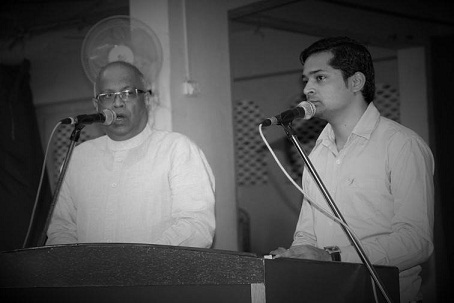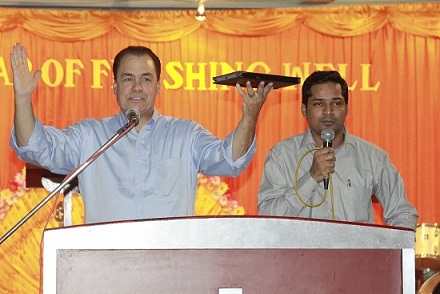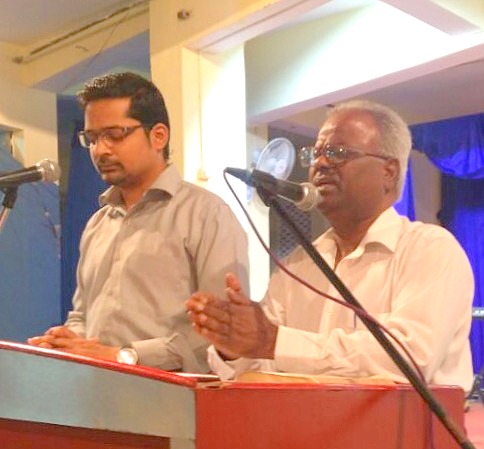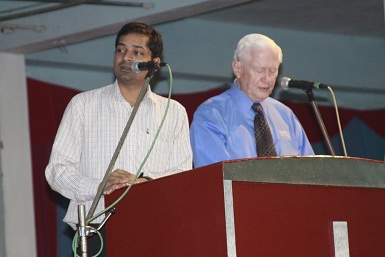Year: 1987, Pages: 447,
ISBN-10: 0801038189
Norman L. Geisler (born
1932) is a Christian systematic theologian, philosopher, and apologist. He is
the co-founder of two non-denominational Evangelical seminaries (Veritas
Evangelical Seminary and Southern Evangelical Seminary). He holds a Ph.D. in
philosophy from Loyola University and is well known for his scholarly
contributions to the subjects of classical Christian apologetics, systematic
theology, the history of philosophy, philosophy of religion, the creationism
and evolution debate, Calvinism, Roman Catholicism, biblical inerrancy, Bible
difficulties, ethics, and more. He is the author, coauthor, or editor of over
90 books and hundreds of articles.
Feinberg was born on
August 13, 1938, to Charles Lee and Anne Priscilla Feinberg. His family moved
from Dallas, Texas to Los Angeles, California in 1948 when his father became
the first dean of Talbot Theological Seminary. Feinberg earned his B.A. (1960)
from the University of California at Los Angeles, his B.D. (1963) and Th.M.
(1964) from Talbot Theological Seminary, his Th.D. (1968) from Dallas
Theological Seminary, his M.A. (1971) from Roosevelt University and his Ph.D.
from the University of Chicago. He was an American theologian, author, and
professor of systematic theology and philosophy of religion at Trinity
Evangelical Divinity School.
A brief outline of the
book:
Part one: Introduction
to Philosophy
1. What Is Philosophy?
2. Disciplines Within philosophy 3. Methodology in Philosophy 4. The Tools of
Philosophy 5. The Challenge of Philosophy
Part two: What Is
Knowledge?
6. Can We Know? 7. How
Can We Know? 8. Is Certainty Possible? 9. How Do We Perceive the External
World? 10. How Are Believes Justified?
Part three: What Is
Reality?
11. Is Reality One or Many? 12. The Relationship Between Mind and Body
13. Is Man Free? 14. Does Man Survive Death? 15. Are There Other Minds? 16.
What Is Truth?
Part four: What Is the
Ultimate?
17. The Relationship
between Faith and Reason 18. What Is Meant by ``God''? 19. Does God Exist? 20.
How Can We Talk About God? 21. The Problem of Evil 22. Can We Experience God?
Part five: What Is Good
or Right?
23. What Is the Right?
24. How Do We Know What Is Right? 25. The Relationship between Rules and
Results 26. Is the Right Universal? 27. Do Moral Duties Ever Conflict?
Geisler and Feinberg
offer a brief definition of philosophy: “Philosophy is, then, the critical
analysis of fundamental concepts of human inquiry, and the normative discussion
of how human thought and action ought to function, as well as the description
of the nature of reality.” (Pg. 17). "Christianity can stand up to the
intellectual challenge mounted against it. The result of such a challenge
should not be the loss of faith, but the priceless possession of a well-reasoned
and mature faith." (Pg. 22).
Even though this book
is written as a textbook, I found it very valuable. Two of the most significant
chapters for the new philosopher are, "The Tools of Philosophy," and,
"The Challenge of Philosophy." The Tools chapter is a discussion of
how arguments are built and how to assess them. The Challenge chapter discusses
the goals of philosophy and the role the philosophy plays for the Christian (comprising
"The Biblical Basis for Christian Philosophy")
This is obviously an
area that thoughtful Christians need to have some familiarity. As the authors
opine: 'Without a thorough knowledge of philosophy the Christian is at the
mercy of the non-Christian in the intellectual arena.
Geisler and Feinberg
make their position clear: 'God places no premium on ignorance. Christians do
not receive a spiritual reward for an ignorant faith.' In fact, the Scriptures
make it clear that Christians are to love God with all of their being, including
their minds.
The book requires some
thinking but is really a delight to read. One feels really well-fed after
reading it, and has a deeper look at what he encounter in his own experience.
Each chapter is then
shadowed by some deductions that are attuned with Christian Theism. The authors
include a glossary, which provides quick definitions for terms such as: Logic,
non sequitur, theism, accident, antinomy, deontology etc. There is also an
index.
I strongly recommend this book for Christians who are studying philosophy at the university or college level and for Christians interested in philosophy, apologetics, etc
Image Source:https://images-na.ssl-images-amazon.com/images/I/41JDLVDX9qL._SX331_BO1,204,203,200_.jpg


















